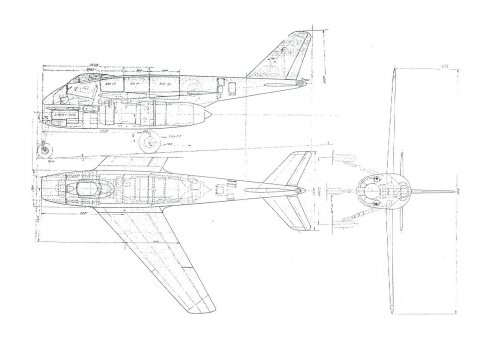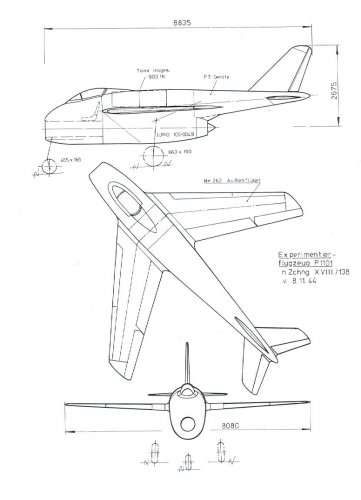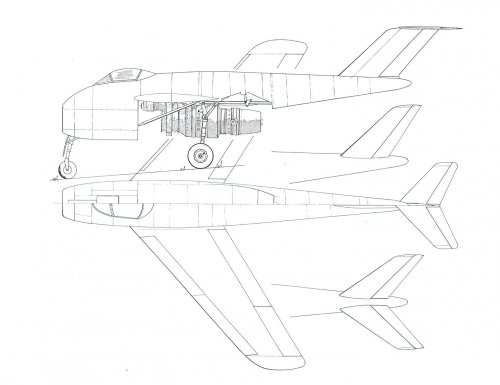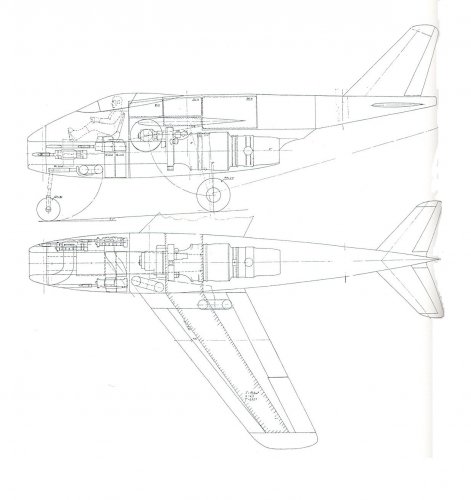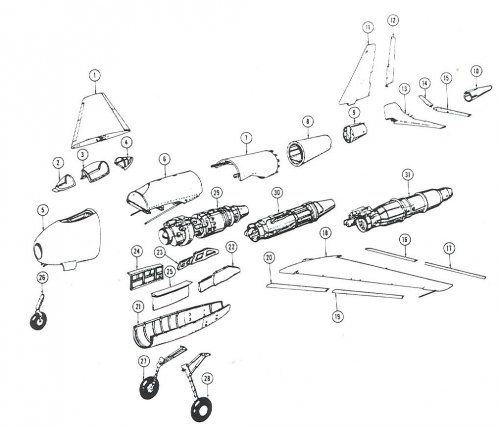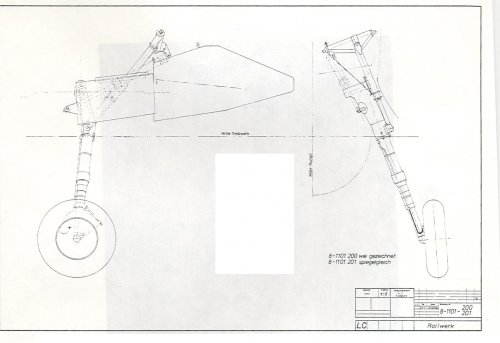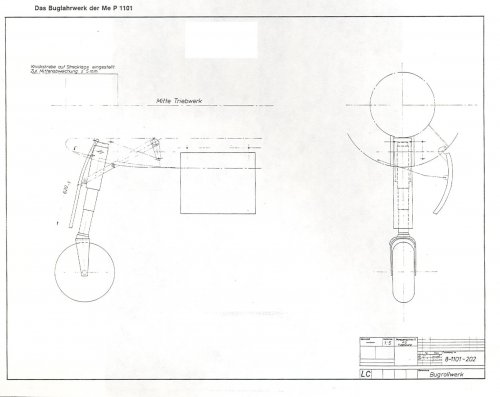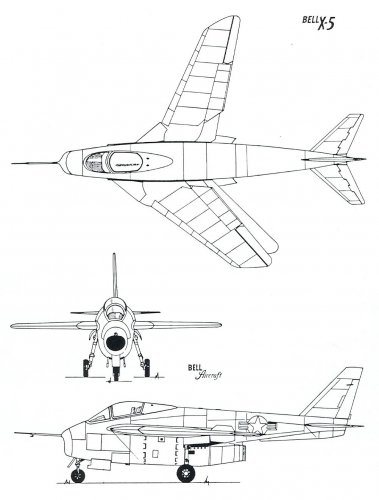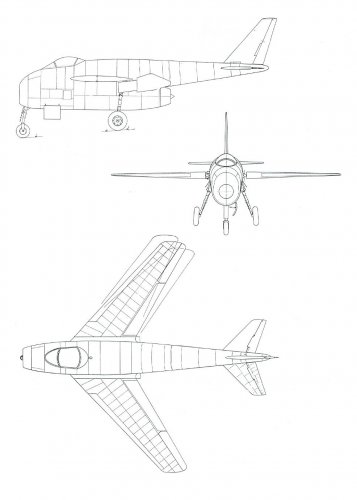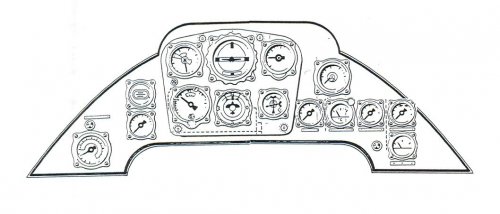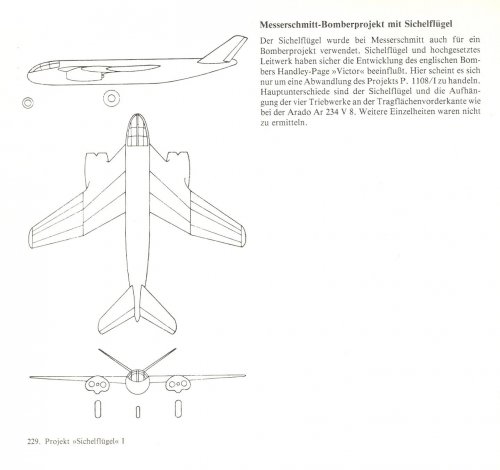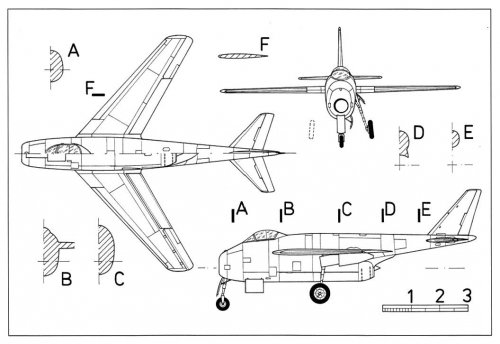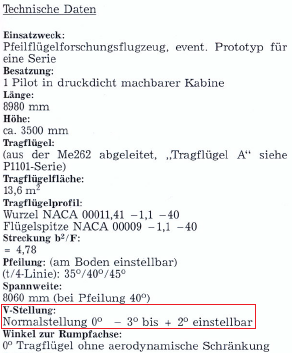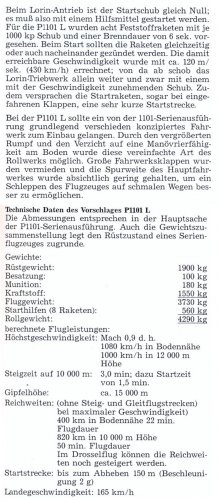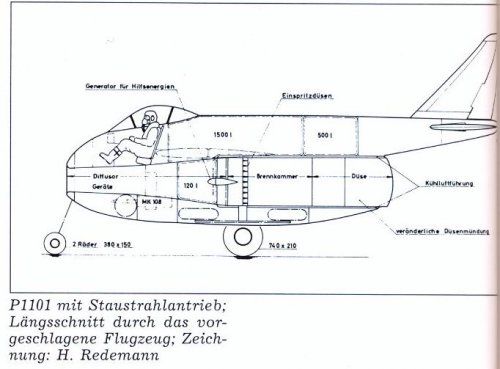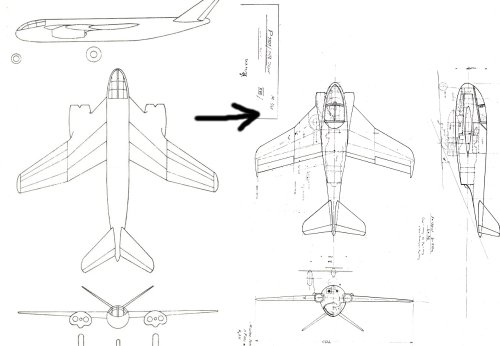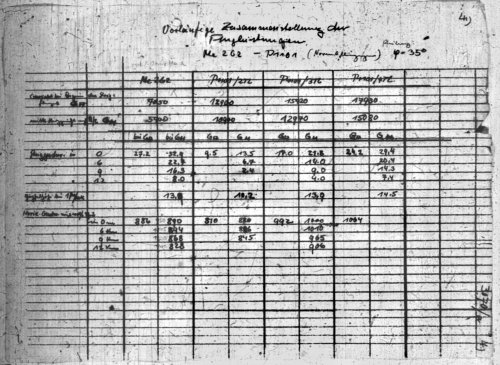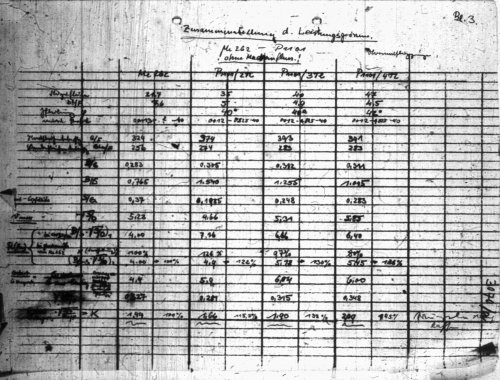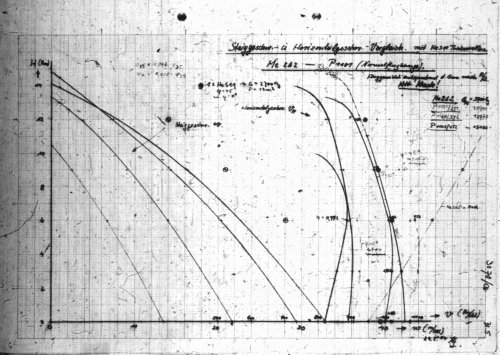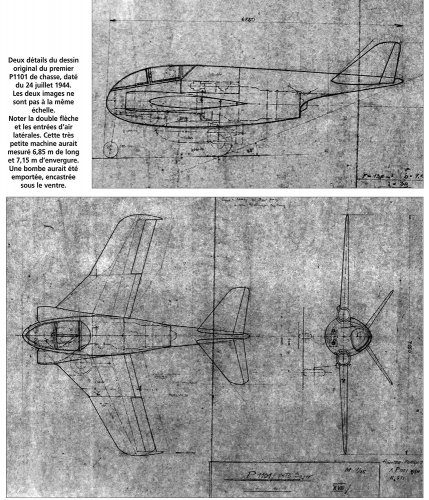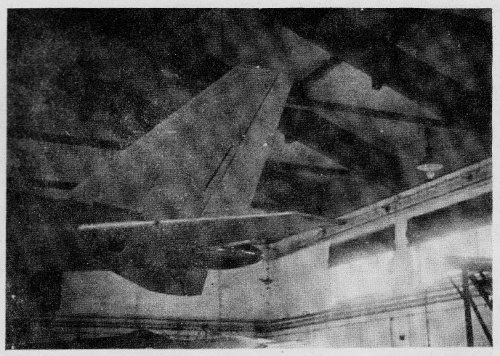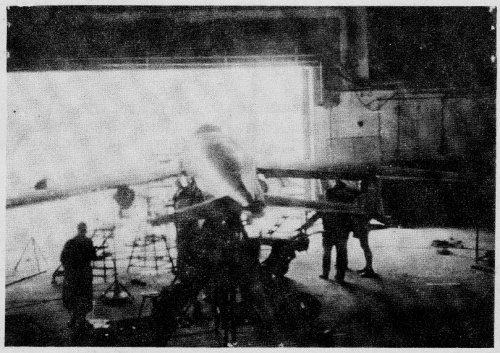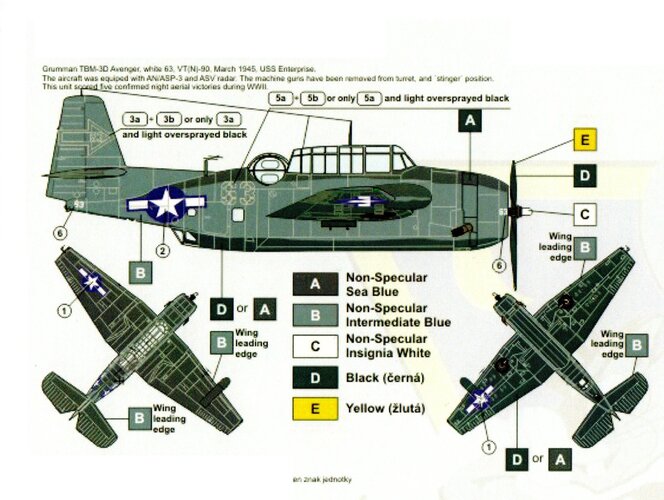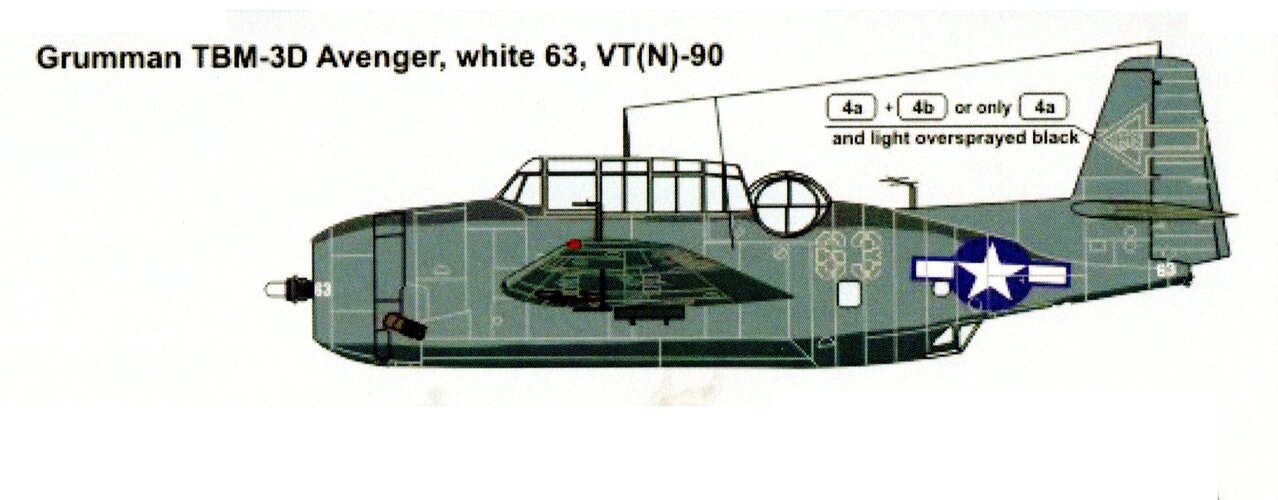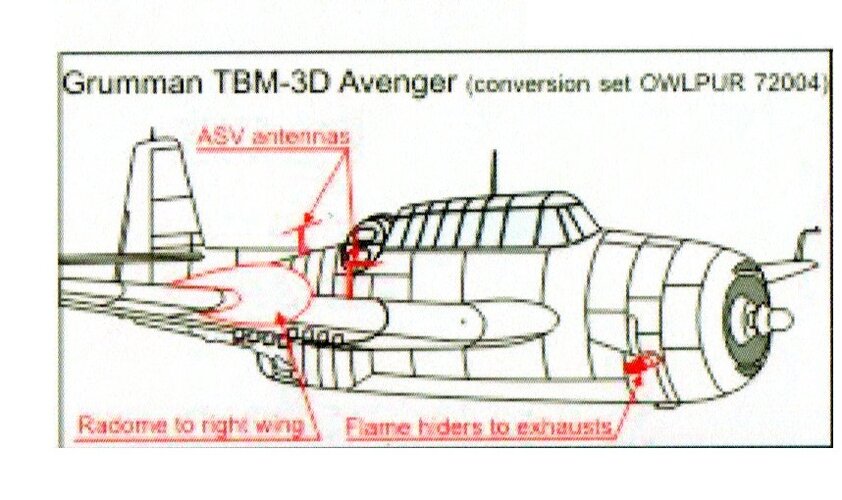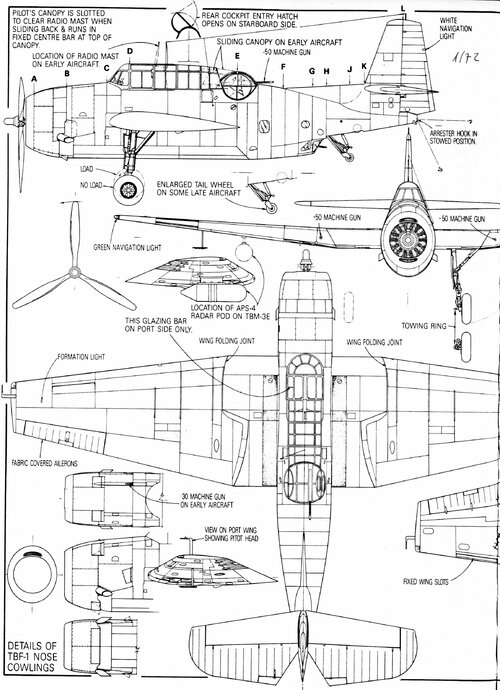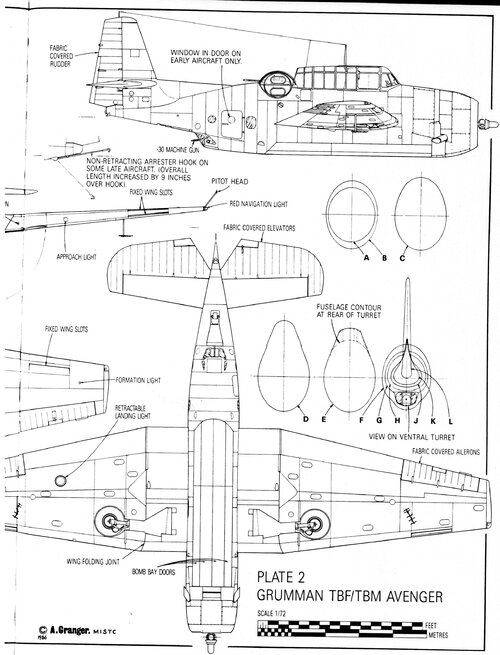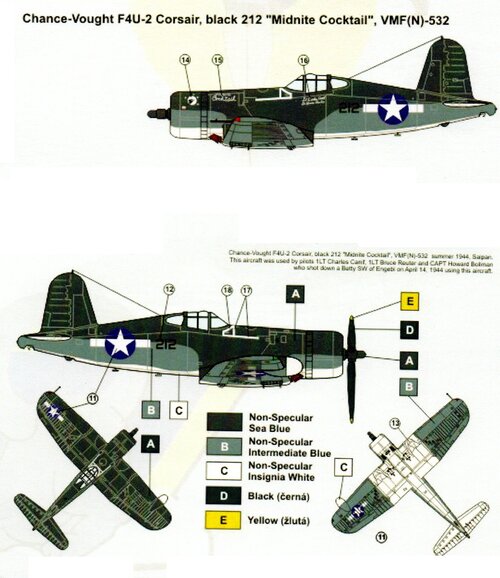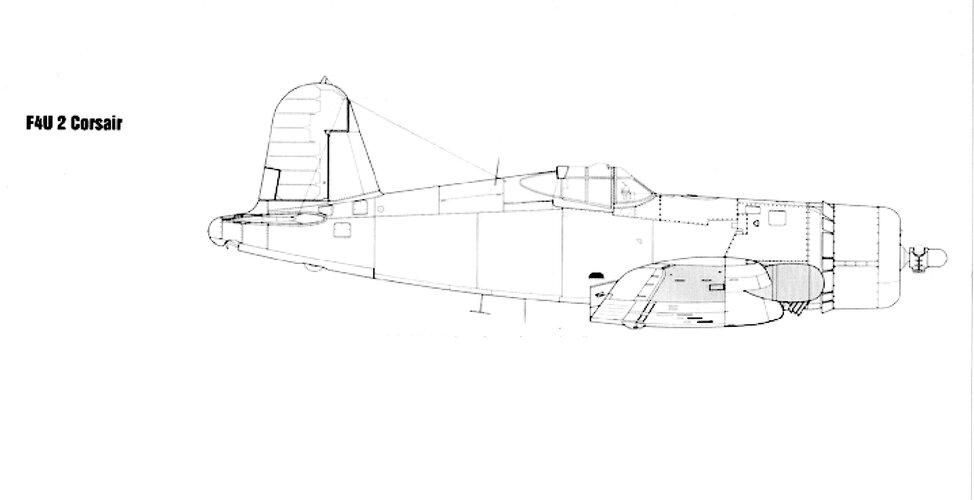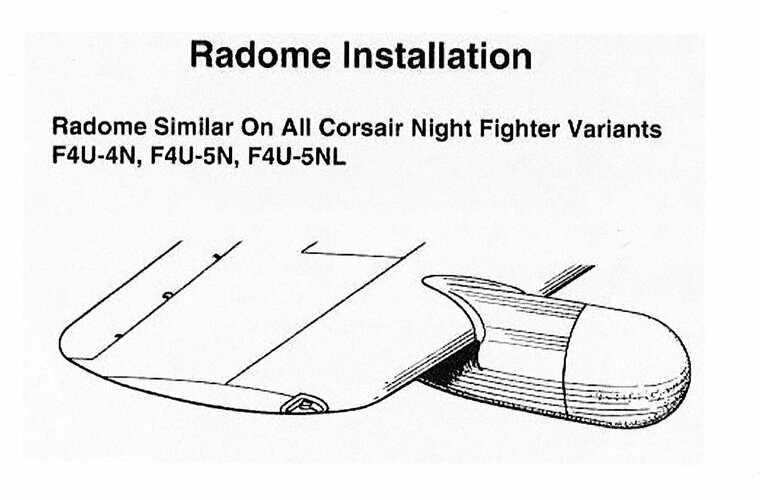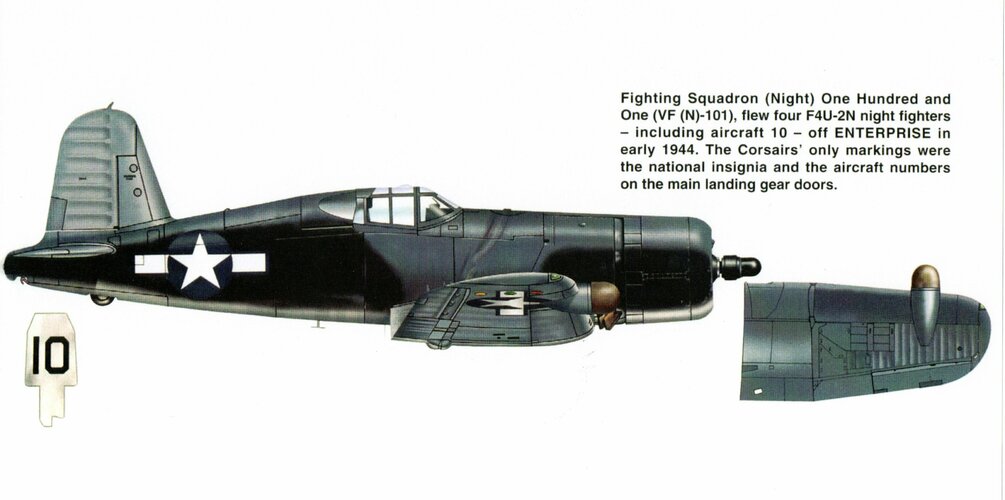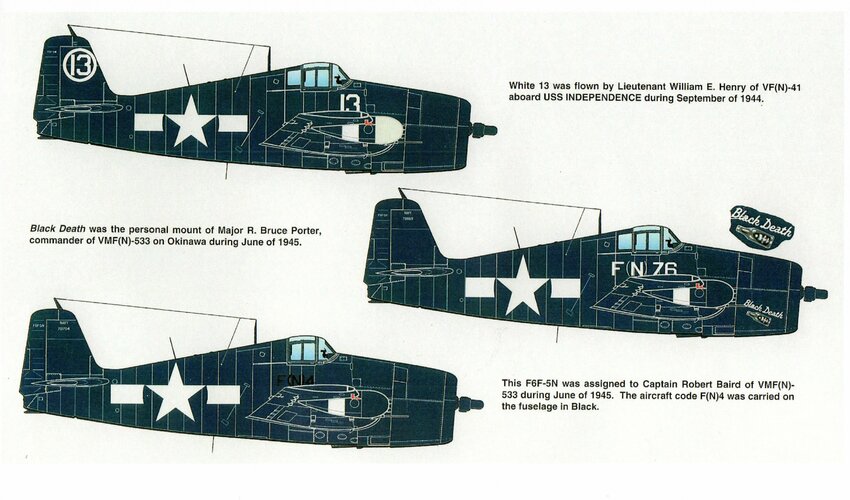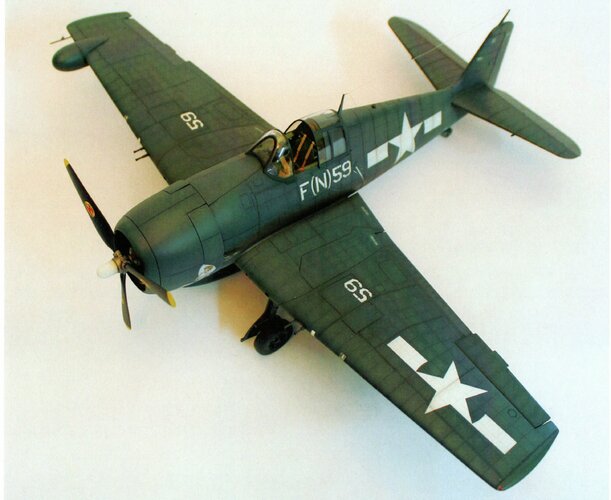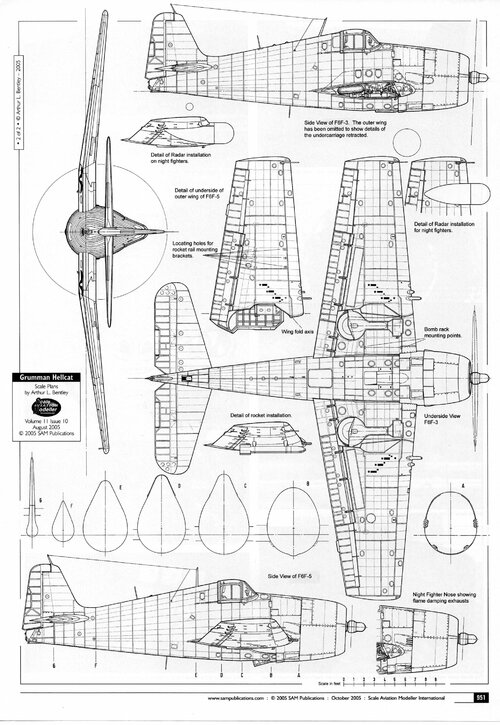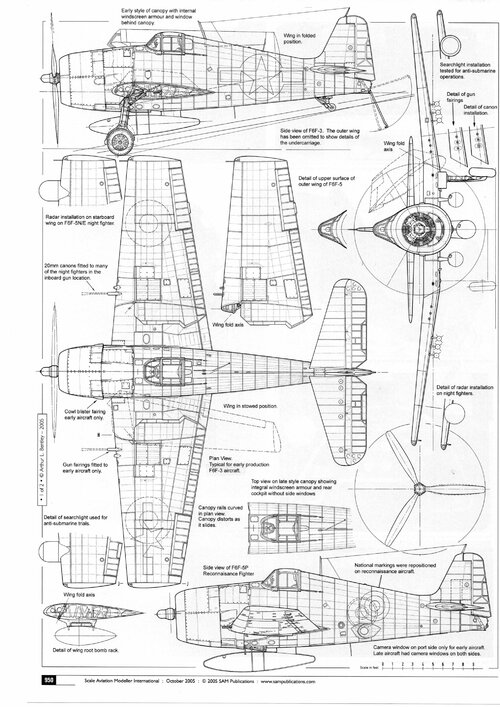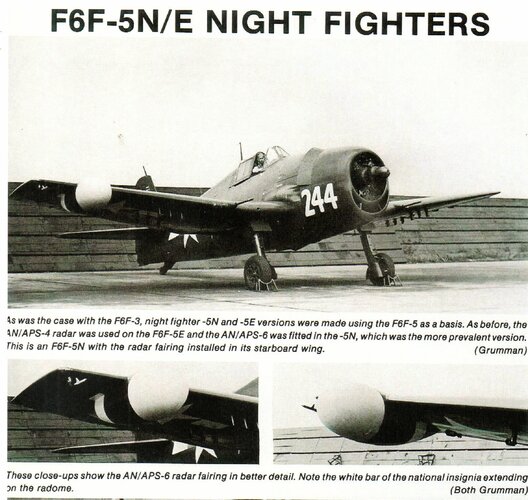You are using an out of date browser. It may not display this or other websites correctly.
You should upgrade or use an alternative browser.
You should upgrade or use an alternative browser.
Messerschmitt Me P.1101
- Thread starter Justo Miranda
- Start date
Wasp
ACCESS: Restricted
- Joined
- 11 January 2010
- Messages
- 28
- Reaction score
- 12
hi folks,
I just recently discovered this fantastic forum and was stunned about the bundled insight into Luft 46 projects. A real goldmine for a Luftwaffe modeller as I am.
So, after reading a lot of treads, I think its time for my first post, and of course, it all starts with a question...
As there are already treads concerning the themes in question, I'm posting in some existing ones like this one. It's not mentioned as hijacking someone elses tread, but to keep the number of similar themes low.
Concerning the Me P 1101, which is already discussed here covered with a lots of drawings:
I wanted to recover an old HUMA kit of mine and having already both of the Dragon/DML Me 1101 (the dayfighter in normal configuration and the night fighter with "Hirschgeweih" Antennas and T-tail) I wanted to differ the third one from them (I don't like repetitions much).
The obvious first choice was of course doing the V-tail.
As for the camouflage and equipment, I was always intrigued by the box art of Dragons Ar 234 C-3 with V-1, showing two small Me 1101 escortsfighters in the background carrying what looked like two Hs 298 missiles. So that was what I'm aiming for.
But still not enough conversion, I'm thinking of doing it as a bad weather fighter equipped with radar and here finally my question comes:
I ones saw a drawing of a Me 1101 with an enclosed radar above the fuselages air intake without any external Antennas. Looking a little bit like the radar dome of the F-86 K. However I was never able to find this drawing again, so does anyone know of this version or even have a drawing showing it?
Any help would be much appreciated.
PS: Ah, and does anyone know by any chance if there are somewhere Hs 298s in 1/72 available?
I just recently discovered this fantastic forum and was stunned about the bundled insight into Luft 46 projects. A real goldmine for a Luftwaffe modeller as I am.
So, after reading a lot of treads, I think its time for my first post, and of course, it all starts with a question...
As there are already treads concerning the themes in question, I'm posting in some existing ones like this one. It's not mentioned as hijacking someone elses tread, but to keep the number of similar themes low.
Concerning the Me P 1101, which is already discussed here covered with a lots of drawings:
I wanted to recover an old HUMA kit of mine and having already both of the Dragon/DML Me 1101 (the dayfighter in normal configuration and the night fighter with "Hirschgeweih" Antennas and T-tail) I wanted to differ the third one from them (I don't like repetitions much).
The obvious first choice was of course doing the V-tail.
As for the camouflage and equipment, I was always intrigued by the box art of Dragons Ar 234 C-3 with V-1, showing two small Me 1101 escortsfighters in the background carrying what looked like two Hs 298 missiles. So that was what I'm aiming for.
But still not enough conversion, I'm thinking of doing it as a bad weather fighter equipped with radar and here finally my question comes:
I ones saw a drawing of a Me 1101 with an enclosed radar above the fuselages air intake without any external Antennas. Looking a little bit like the radar dome of the F-86 K. However I was never able to find this drawing again, so does anyone know of this version or even have a drawing showing it?
Any help would be much appreciated.
PS: Ah, and does anyone know by any chance if there are somewhere Hs 298s in 1/72 available?
Clipper996
Indeed
- Joined
- 16 April 2013
- Messages
- 20
- Reaction score
- 2
Messerschmitt P.1101 Question
I've been reading a book called "Messerschmitt Geheimprojekte", and it has quite a lot of information regarding the P.1101, but since German isn't my first language there are certain things that i don't understand; The V1 prototype was meant to have variable sweep wings (35°,40°,45°), but from what i understood apparently it could also change the wing dihedral/anhedral (that would make complete sense if the wing had an incidence angle, but it seems to me that there's none), so i'm wondering if someone could confirm whether it really had variable dihedral/anhedral angle.
I've been reading a book called "Messerschmitt Geheimprojekte", and it has quite a lot of information regarding the P.1101, but since German isn't my first language there are certain things that i don't understand; The V1 prototype was meant to have variable sweep wings (35°,40°,45°), but from what i understood apparently it could also change the wing dihedral/anhedral (that would make complete sense if the wing had an incidence angle, but it seems to me that there's none), so i'm wondering if someone could confirm whether it really had variable dihedral/anhedral angle.
Attachments
windswords
ACCESS: Secret
- Joined
- 19 May 2009
- Messages
- 389
- Reaction score
- 217
Re: Messerschmitt P.1101 Question
Google translate renders it to "Normal position to adjustable", so I would translate it: Normal position: 0 degrees, -3 to +2 degrees adjustable.
Google translate renders it to "Normal position to adjustable", so I would translate it: Normal position: 0 degrees, -3 to +2 degrees adjustable.
- Joined
- 6 November 2010
- Messages
- 5,263
- Reaction score
- 5,514
Re: Messerschmitt P.1101 Question
'Winkel zur Rumpfachse' means 'angle with fuselage axis' - wing incidence I would say, in this case 0o.
With sweep angle covered by 'Pfeilung', that leaves 'V-Stellung' to mean anhedral/dihedral.
Adjustable from -3o -> normal 0o -> +2o.
Enjoy the book, it covers Willy Messerschmitt's postwar aviation activities very nicely too.
'Winkel zur Rumpfachse' means 'angle with fuselage axis' - wing incidence I would say, in this case 0o.
With sweep angle covered by 'Pfeilung', that leaves 'V-Stellung' to mean anhedral/dihedral.
Adjustable from -3o -> normal 0o -> +2o.
Enjoy the book, it covers Willy Messerschmitt's postwar aviation activities very nicely too.
- Joined
- 8 March 2009
- Messages
- 1,056
- Reaction score
- 1,298
Re: Messerschmitt P.1101 Question
You may find this interesting.
U.S. Naval Technical Mission in Europe; Messerschmitt Aircraft Design Development, Aug '45 -
http://www.dtic.mil/dtic/tr/fulltext/u2/a953437.pdf
It contains lots of neat info on the P1101 and other late Messerschmitt projects. There is no mention of variable incidence but its a bit short on info about the prototype.
You may find this interesting.
U.S. Naval Technical Mission in Europe; Messerschmitt Aircraft Design Development, Aug '45 -
http://www.dtic.mil/dtic/tr/fulltext/u2/a953437.pdf
It contains lots of neat info on the P1101 and other late Messerschmitt projects. There is no mention of variable incidence but its a bit short on info about the prototype.
Clipper996
Indeed
- Joined
- 16 April 2013
- Messages
- 20
- Reaction score
- 2
Re: Messerschmitt P.1101 Question
Does anyone have an info regarding the nose wheel of P.1101 (experimental or serial version), was it a castor wheel or did it have a steering mechanism?
It rotated around its axis by 90° upon retraction, but I'm not certain if that meant that it had a steering mechanism as well.
Does anyone have an info regarding the nose wheel of P.1101 (experimental or serial version), was it a castor wheel or did it have a steering mechanism?
It rotated around its axis by 90° upon retraction, but I'm not certain if that meant that it had a steering mechanism as well.
- Joined
- 11 June 2014
- Messages
- 1,541
- Reaction score
- 2,899
Think I can shed a little more light on P 1101. These graphs (attached) are from a bundle of notes by Hans Hornung dated May 24, 1944. They show the Me 262 being compared against three designs under P 1101 - one with two HeS 011 turbojets '2TL', one with three '3TL' and one with four '4TL'. So P 1101 must've followed on immediately from the twin jet P 1099 and P 1100, but using the HeS 011 and scaling up. Presumably, when 1-TL-Jager came along in July and there was a solid requirement which specifically wanted the HeS 011, the general features of the multi-jet P 1101s were scaled down to create the company's first design for the competition.
Attachments
- Joined
- 26 May 2006
- Messages
- 34,894
- Reaction score
- 15,759
shaba said:is it just me or do the early iterations of p.1101 look like p.1073 derivative's
not much.
- Joined
- 8 March 2009
- Messages
- 1,056
- Reaction score
- 1,298
Could a mod consolidate the several threads concerning the P1101? done
What is the source for the 3rd drawing with the various tail arrangements?
Myhra has a reproduction of that drawing and a few others in his book P1101 but he doesnt give any kind of sources. I'd like to know if that drawing is an original, a redraw/trace or purely notional.
Le Fana Hors-Serie 42 has a repro of this same drawing, but its neat in that an earlier more crescent planform is visible on one side and a few different wingtips.
I'm also posting 2 pics of the 1101 from a CIOS report that I haven't seen anywhere else.
Justo Miranda said:P.1101 Post -1
What is the source for the 3rd drawing with the various tail arrangements?
Myhra has a reproduction of that drawing and a few others in his book P1101 but he doesnt give any kind of sources. I'd like to know if that drawing is an original, a redraw/trace or purely notional.
newsdeskdan said:Think I can shed a little more light on P 1101. These graphs (attached) are from a bundle of notes by Hans Hornung dated May 24, 1944. They show the Me 262 being compared against three designs under P 1101 - one with two HeS 011 turbojets '2TL', one with three '3TL' and one with four '4TL'. So P 1101 must've followed on immediately from the twin jet P 1099 and P 1100, but using the HeS 011 and scaling up. Presumably, when 1-TL-Jager came along in July and there was a solid requirement which specifically wanted the HeS 011, the general features of the multi-jet P 1101s were scaled down to create the company's first design for the competition.
Le Fana Hors-Serie 42 has a repro of this same drawing, but its neat in that an earlier more crescent planform is visible on one side and a few different wingtips.
I'm also posting 2 pics of the 1101 from a CIOS report that I haven't seen anywhere else.
Attachments
ArmchairSamurai
ACCESS: Confidential
- Joined
- 1 July 2019
- Messages
- 183
- Reaction score
- 254
Resurrecting an old thread here, but I think you all would be the best people to ask. I was digging around and came across the following link:
https://sassik.livejournal.com/503280.html
It leads to a scanned copy of "Aircraft of the Luftwaffe 1935-1945: An Illustrated Guide" by Jean-Denis GG Lepage. Obviously, there is a wee bit of dubious material in there, but for the most part, the rest seems legit to me. However, there is an exception. The following page I inserted below depicts two variants of the Messerschmitt P.1101. The one labeled as a night fighter, with a tiny blurb of the text, is entirely new to me. I have never seen nor heard of it. Frankly, there is not even a model of it floating around out there, which is hard to believe given the number of real and fake Luft 46 material there is to work with. Has anyone ever seen this variant before? Is there any documentation to suggest this was real design, paper, or otherwise? What do you all think?

https://sassik.livejournal.com/503280.html
It leads to a scanned copy of "Aircraft of the Luftwaffe 1935-1945: An Illustrated Guide" by Jean-Denis GG Lepage. Obviously, there is a wee bit of dubious material in there, but for the most part, the rest seems legit to me. However, there is an exception. The following page I inserted below depicts two variants of the Messerschmitt P.1101. The one labeled as a night fighter, with a tiny blurb of the text, is entirely new to me. I have never seen nor heard of it. Frankly, there is not even a model of it floating around out there, which is hard to believe given the number of real and fake Luft 46 material there is to work with. Has anyone ever seen this variant before? Is there any documentation to suggest this was real design, paper, or otherwise? What do you all think?
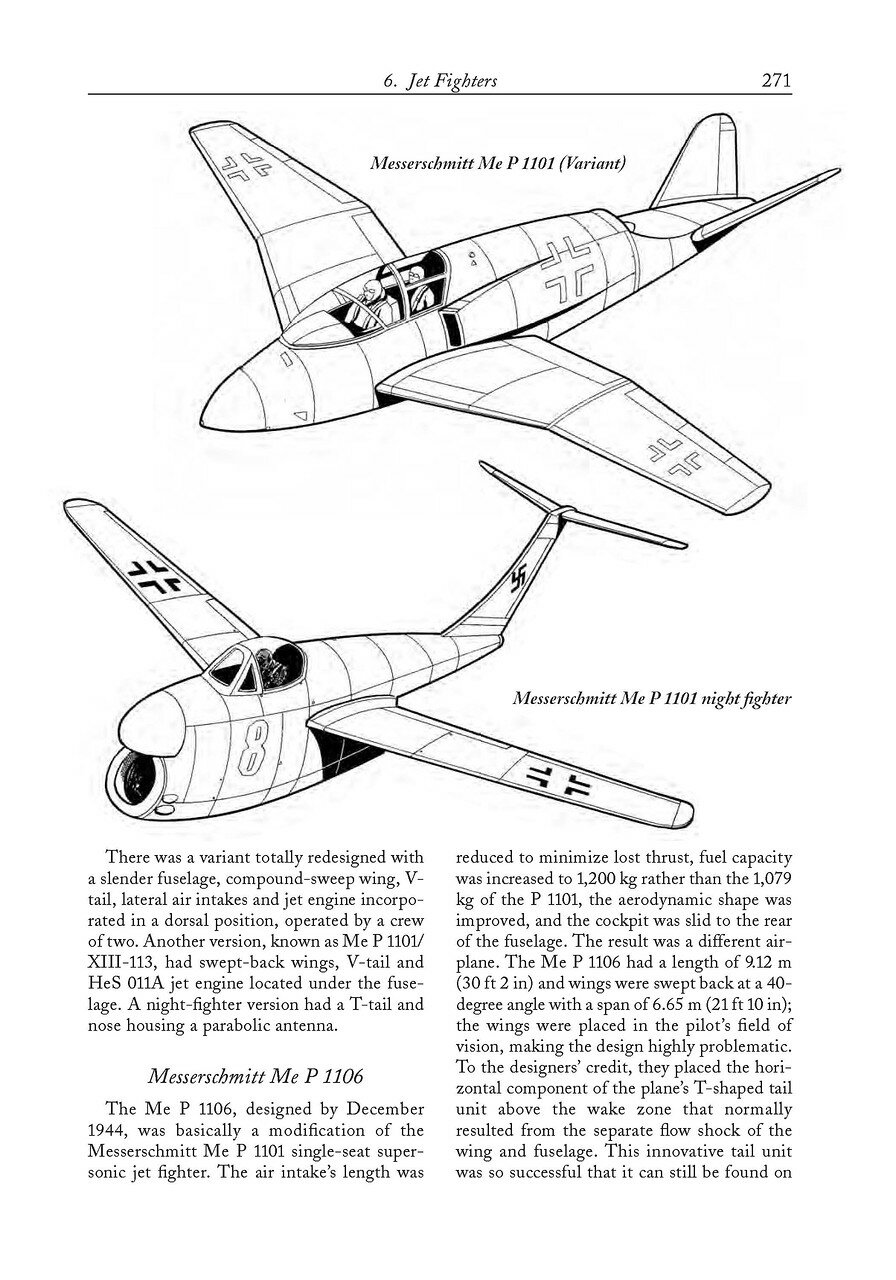
Grzesio
ACCESS: Secret
O boy, Lepage is an extremely unreliable author, I wouldn't even bother with his publications... He is actually a draftsman, who just adds some text (based on any information he had on hand) to his comic style drawings, which are not accurate or wrongly captioned too, and creates books this way. His works on the Flak and Hitlerjugend are unbelievably poor, full of the most fundamental mistakes. And, for example, in his Flak book he posts a thank you note fore a person, who provided him with technical information - it clearly means, he started his work knowing nothing on the subject.
Last edited:
ArmchairSamurai
ACCESS: Confidential
- Joined
- 1 July 2019
- Messages
- 183
- Reaction score
- 254
Interesting. Thank you for that. I figured most of the jet aircraft he listed were dubious given that a few were traceable to Luft 46 and others being entirely napkin drawings so to speak. That being said, despite the likely dubious origin of this concept, would you say that compared to the "stag antlers" of FuG 202, 212, 218, etc., that FuG 240 would be more appropriate for such an aircraft in a night fighter role had the Germans actually committed to developing it? I do like the concept but I feel like it would be unrealistic when considering that production of said aircraft would then deviate between two separate designs, amounting to more work than is necessary, rather than just slapping on a dipole array.O boy, Lepage is an extremely unreliable author, I wouldn't even bother with his publications... He is actually a draftsman, who just adds some text (based on any information he had on hand) to his comic style drawings, which are not accurate or wrongly captioned too, and creates books this way. His works on the Flak and Hitlerjugend are unbelievably poor, full of the most fundamental mistakes. And, for example, in his Flak book he posts a thank you note fore a person, who provided him with technical information - it clearly means, he started his work knowing nothing on the subject.
T. A. Gardner
ACCESS: Top Secret
- Joined
- 18 February 2021
- Messages
- 1,152
- Reaction score
- 2,022
Of note here is that while the Messerschmitt P 1101 never flew, the prototype was delivered to Bell Aircraft in the US following the war where it was closely copied--with some improvements like being able to change the wing sweep in flight-- as the Bell X-5. So, we have some idea of how the Messerschmitt design would have performed in flight.
The Bell X-5 was considered somewhat dangerous to fly and had very vicious spin and stall characteristics (sort of like the P-39 maybe?). Both aircraft were really too small to be fitted with a useful armament or fire control systems. The Bell design did have some use in furthering both swept wing performance as well as in development of variable wing position aircraft. The Bell design was however much better than the competing Navy Grumman XF10F Jaguar that was a veritable death trap to fly.
The Bell X-5 was considered somewhat dangerous to fly and had very vicious spin and stall characteristics (sort of like the P-39 maybe?). Both aircraft were really too small to be fitted with a useful armament or fire control systems. The Bell design did have some use in furthering both swept wing performance as well as in development of variable wing position aircraft. The Bell design was however much better than the competing Navy Grumman XF10F Jaguar that was a veritable death trap to fly.
Last edited:
T. A. Gardner
ACCESS: Top Secret
- Joined
- 18 February 2021
- Messages
- 1,152
- Reaction score
- 2,022
It is highly unlikely that the P 1101 or a derivative thereof would be suitable as a nightfighter. In the late 40's and into the early 50's the state of the art in nightfighter technology required a dedicated radar operator aboard the plane. It wouldn't be until such systems as the Hughes E series of semi-automatic intercept computers were developed that you could successfully do all-weather intercepts with just one crew member. Germany during the war did put radar on single seat fighters, but these didn't produce much in the way of exceptional results.Interesting. Thank you for that. I figured most of the jet aircraft he listed were dubious given that a few were traceable to Luft 46 and others being entirely napkin drawings so to speak. That being said, despite the likely dubious origin of this concept, would you say that compared to the "stag antlers" of FuG 202, 212, 218, etc., that FuG 240 would be more appropriate for such an aircraft in a night fighter role had the Germans actually committed to developing it? I do like the concept but I feel like it would be unrealistic when considering that production of said aircraft would then deviate between two separate designs, amounting to more work than is necessary, rather than just slapping on a dipole array.O boy, Lepage is an extremely unreliable author, I wouldn't even bother with his publications... He is actually a draftsman, who just adds some text (based on any information he had on hand) to his comic style drawings, which are not accurate or wrongly captioned too, and creates books this way. His works on the Flak and Hitlerjugend are unbelievably poor, full of the most fundamental mistakes. And, for example, in his Flak book he posts a thank you note fore a person, who provided him with technical information - it clearly means, he started his work knowing nothing on the subject.
Consider one of the first single-seat all-weather fighters, the F-86D. The "Dogship" as it became known fits this bill. It had the Hughes E-4 using an APG 36 radar to perform intercepts. It was at once a technological marvel and maintenance nightmare. Germany was nowhere close to producing anything remotely that sophisticated in 1945.
taildragger
You can count on me - I won a contest
- Joined
- 2 November 2008
- Messages
- 404
- Reaction score
- 502
Didn't the USN successfully use wing-mounted radar on F4Us and F6Fs during the war?It is highly unlikely that the P 1101 or a derivative thereof would be suitable as a nightfighter. In the late 40's and into the early 50's the state of the art in nightfighter technology required a dedicated radar operator aboard the plane. It wouldn't be until such systems as the Hughes E series of semi-automatic intercept computers were developed that you could successfully do all-weather intercepts with just one crew member. Germany during the war did put radar on single seat fighters, but these didn't produce much in the way of exceptional results.Interesting. Thank you for that. I figured most of the jet aircraft he listed were dubious given that a few were traceable to Luft 46 and others being entirely napkin drawings so to speak. That being said, despite the likely dubious origin of this concept, would you say that compared to the "stag antlers" of FuG 202, 212, 218, etc., that FuG 240 would be more appropriate for such an aircraft in a night fighter role had the Germans actually committed to developing it? I do like the concept but I feel like it would be unrealistic when considering that production of said aircraft would then deviate between two separate designs, amounting to more work than is necessary, rather than just slapping on a dipole array.O boy, Lepage is an extremely unreliable author, I wouldn't even bother with his publications... He is actually a draftsman, who just adds some text (based on any information he had on hand) to his comic style drawings, which are not accurate or wrongly captioned too, and creates books this way. His works on the Flak and Hitlerjugend are unbelievably poor, full of the most fundamental mistakes. And, for example, in his Flak book he posts a thank you note fore a person, who provided him with technical information - it clearly means, he started his work knowing nothing on the subject.
Consider one of the first single-seat all-weather fighters, the F-86D. The "Dogship" as it became known fits this bill. It had the Hughes E-4 using an APG 36 radar to perform intercepts. It was at once a technological marvel and maintenance nightmare. Germany was nowhere close to producing anything remotely that sophisticated in 1945.
T. A. Gardner
ACCESS: Top Secret
- Joined
- 18 February 2021
- Messages
- 1,152
- Reaction score
- 2,022
The did do that, but it wasn't highly successful. The USS Enterprise was the USN's specialist night warfare carrier by 1944, and while TBF Avengers with radar proved highly successful, the single seat night fighter left a lot to be desired. This was rectified to some extent in 1945-46 by the introduction of the F7F-2/3/4N Tigercat, although short-lived.Didn't the USN successfully use wing-mounted radar on F4Us and F6Fs during the war?It is highly unlikely that the P 1101 or a derivative thereof would be suitable as a nightfighter. In the late 40's and into the early 50's the state of the art in nightfighter technology required a dedicated radar operator aboard the plane. It wouldn't be until such systems as the Hughes E series of semi-automatic intercept computers were developed that you could successfully do all-weather intercepts with just one crew member. Germany during the war did put radar on single seat fighters, but these didn't produce much in the way of exceptional results.Interesting. Thank you for that. I figured most of the jet aircraft he listed were dubious given that a few were traceable to Luft 46 and others being entirely napkin drawings so to speak. That being said, despite the likely dubious origin of this concept, would you say that compared to the "stag antlers" of FuG 202, 212, 218, etc., that FuG 240 would be more appropriate for such an aircraft in a night fighter role had the Germans actually committed to developing it? I do like the concept but I feel like it would be unrealistic when considering that production of said aircraft would then deviate between two separate designs, amounting to more work than is necessary, rather than just slapping on a dipole array.O boy, Lepage is an extremely unreliable author, I wouldn't even bother with his publications... He is actually a draftsman, who just adds some text (based on any information he had on hand) to his comic style drawings, which are not accurate or wrongly captioned too, and creates books this way. His works on the Flak and Hitlerjugend are unbelievably poor, full of the most fundamental mistakes. And, for example, in his Flak book he posts a thank you note fore a person, who provided him with technical information - it clearly means, he started his work knowing nothing on the subject.
Consider one of the first single-seat all-weather fighters, the F-86D. The "Dogship" as it became known fits this bill. It had the Hughes E-4 using an APG 36 radar to perform intercepts. It was at once a technological marvel and maintenance nightmare. Germany was nowhere close to producing anything remotely that sophisticated in 1945.
Sherman Tank
I don't want to change my personal text
- Joined
- 14 October 2016
- Messages
- 235
- Reaction score
- 211
Depends on your definition of successful, I suppose. The USN did successfully develop and deploy a single-seat night fighter with a radar system. It didn't work well, but it was deployed.
It reminds me a bit of how the Royal Navy was the only navy in 1914 to have a dedicated anti-submarine weapon in service. It was an incredibly clumsy lash-up consisting of an explosive charge trailed by a steel cable behind a destroyer, but it did exist.
It reminds me a bit of how the Royal Navy was the only navy in 1914 to have a dedicated anti-submarine weapon in service. It was an incredibly clumsy lash-up consisting of an explosive charge trailed by a steel cable behind a destroyer, but it did exist.
Grumman TBF-1C night fighter with AN/APS-3 AI radarThe did do that, but it wasn't highly successful. The USS Enterprise was the USN's specialist night warfare carrier by 1944, and while TBF Avengers with radar proved highly successful, the single seat night fighter left a lot to be desired. This was rectified to some extent in 1945-46 by the introduction of the F7F-2/3/4N Tigercat, although short-lived.Didn't the USN successfully use wing-mounted radar on F4Us and F6Fs during the war?It is highly unlikely that the P 1101 or a derivative thereof would be suitable as a nightfighter. In the late 40's and into the early 50's the state of the art in nightfighter technology required a dedicated radar operator aboard the plane. It wouldn't be until such systems as the Hughes E series of semi-automatic intercept computers were developed that you could successfully do all-weather intercepts with just one crew member. Germany during the war did put radar on single seat fighters, but these didn't produce much in the way of exceptional results.Interesting. Thank you for that. I figured most of the jet aircraft he listed were dubious given that a few were traceable to Luft 46 and others being entirely napkin drawings so to speak. That being said, despite the likely dubious origin of this concept, would you say that compared to the "stag antlers" of FuG 202, 212, 218, etc., that FuG 240 would be more appropriate for such an aircraft in a night fighter role had the Germans actually committed to developing it? I do like the concept but I feel like it would be unrealistic when considering that production of said aircraft would then deviate between two separate designs, amounting to more work than is necessary, rather than just slapping on a dipole array.O boy, Lepage is an extremely unreliable author, I wouldn't even bother with his publications... He is actually a draftsman, who just adds some text (based on any information he had on hand) to his comic style drawings, which are not accurate or wrongly captioned too, and creates books this way. His works on the Flak and Hitlerjugend are unbelievably poor, full of the most fundamental mistakes. And, for example, in his Flak book he posts a thank you note fore a person, who provided him with technical information - it clearly means, he started his work knowing nothing on the subject.
Consider one of the first single-seat all-weather fighters, the F-86D. The "Dogship" as it became known fits this bill. It had the Hughes E-4 using an APG 36 radar to perform intercepts. It was at once a technological marvel and maintenance nightmare. Germany was nowhere close to producing anything remotely that sophisticated in 1945.
Attachments
The lack of night fighters affected U.S. Navy that had to resort to the transformation of fourteen Lockheed PV-1 patrol bombers into a night fighting role as interim solution. The aircraft were fitted with one SCR-540 radar set in the nose, with the azimuth antennae installed of the engine nacelles, VHF radios, IFF equipment and a blister of three forward firing 12.7 mm heavy machine guns under the nose. In September 1943 the VMF (N)-531 Squadron, with the modified PV-1 night fighters, arrived in the South Pacific accomplishing their first kill, a Betty, off Vella Lavella, on 13 October. At the end of 1943, ninety per cent of the Japanese bombing attacks were performed at night. To confuse GCI radar operators, night intruders (wood and fabric biplanes) occasionally dropped chaff simulating false attacks.
In November 1943, during landings in the Gilbert Islands, the US Navy began its first night operations with Hellcats day fighters vectored by shipboard radar, achieving some success. At that time the USS Enterprise already had some TBF-1C Avenger torpedo-bombers fitted with the AN/APS-3 radar, an ASV set with marginal AI performance.
The ASV was too bulky for single-seat fighter installation, but these could be guided by a TBF-1C to visually spot the Japanese intruder blue exhaust flames. The US Navy tried a somewhat different approach using night combat air patrols consisted of a radar equipped Avenger (acting as an airborne controller) accompanied by two conventional Hellcats. The first kill was achieved in the night of 22-23 November, when one Mitsubishi Betty was shot down by the Avenger while the Hellcats avoided collision, a lesson that the British had learnt in 1941 with their Turbinlite teams.
Early in 1944 the first F4U-2 Corsair naval night fighter, equipped with AI radar, finally arrived on Tarawa with the VF(N)-101 Sqn, embarked aboard the USS Enterprise. The F4U-2 was an old F4U-1 Birdcage converted into night fighter with the installation of one Sperry/Western Electric AN/APS-4 AI radar with beacon function, IFF transponder and AN/APN-1 radio altimeter with two inverted ‘T’ dipoles fitted under the fuselage belly. Most of the radar electronic, including the Stromberg Mk.II modulator, were mounted behind the pilot seat, but the scanner with the 43 cm of diameter parabolic antenna, was housed in a pod merged into the starboard wing leading edge. The whole set weighted 110 kg. The installation of the pod made it necessary to remove one of the 12.7 mm heavy machine guns. The AN/APS-4 operated at 3.2 cm wavelength, with 40 kw power output, 4,000 m range and provided suitable indication for firing guns. Only thirty-four Birdcages were converted into night fighters. In the Pacific Theatre the VF(N)-75, VF(N)-101 and VMF(N)-532 Squadrons flew the F4U-2 on New Georgia, Eniwetok Atoll and Wotje Atoll. They also served on the USS Enterprise, USS Essex, USS Hornet and USS Intrepid aircraft carriers. The Corsair long nose and low canopy restricted the visibility of the pilot making it very dangerous to be used into carrier operations. By January 1945 the U.S. Navy started replacing them by three Bat Eyes Squadrons of F6F-3N and F6F-5N Hellcats, a type of plane considered safer for night missions. The F6F-3N, hundred and fifty of which were built with modified flat windscreen, also used the AN/APS-4 radar fitted into a radome (radar-dome) on the starboard wing, but in this model there was no need to sacrifice armament.
On 14 May 1945, the VMF(N)-533 flew the F6F-3N from Yontan-Okinawa airfield achieving his first kill two days later. Grumman built 1,435 F6F-5N with the Westinghouse Electric AN/APS-6A radar and two 12.7 mm machine guns replaced with 20 mm cannons, fitted with exhaust flame dampers, to increase the probability of first-pass kill. The AN/APS-6A was essentially a compact version of the AN/APS-4 with the modulator in the nacelle, close to the scanner, 3.2 cm wavelength, 40 kw power output, 9,000 m range, beacon function, IFF transponder and AN/APN-1 radio altimeter. The new AI radar operated in search and gunsight modes, providing suitable indication for firing guns.
During the first year of naval night fighter operations in the Pacific Theatre, a total of thirty-nine Japanese planes were shot down. In the autumn of 1940, one British scientific mission was sent to the United States for the purpose of providing information on the radar technical advances being made by Great Britain: IFF transponder, VHF radio, magnetron microwaves and LORAN electronic navigation system.
In November 1943, during landings in the Gilbert Islands, the US Navy began its first night operations with Hellcats day fighters vectored by shipboard radar, achieving some success. At that time the USS Enterprise already had some TBF-1C Avenger torpedo-bombers fitted with the AN/APS-3 radar, an ASV set with marginal AI performance.
The ASV was too bulky for single-seat fighter installation, but these could be guided by a TBF-1C to visually spot the Japanese intruder blue exhaust flames. The US Navy tried a somewhat different approach using night combat air patrols consisted of a radar equipped Avenger (acting as an airborne controller) accompanied by two conventional Hellcats. The first kill was achieved in the night of 22-23 November, when one Mitsubishi Betty was shot down by the Avenger while the Hellcats avoided collision, a lesson that the British had learnt in 1941 with their Turbinlite teams.
Early in 1944 the first F4U-2 Corsair naval night fighter, equipped with AI radar, finally arrived on Tarawa with the VF(N)-101 Sqn, embarked aboard the USS Enterprise. The F4U-2 was an old F4U-1 Birdcage converted into night fighter with the installation of one Sperry/Western Electric AN/APS-4 AI radar with beacon function, IFF transponder and AN/APN-1 radio altimeter with two inverted ‘T’ dipoles fitted under the fuselage belly. Most of the radar electronic, including the Stromberg Mk.II modulator, were mounted behind the pilot seat, but the scanner with the 43 cm of diameter parabolic antenna, was housed in a pod merged into the starboard wing leading edge. The whole set weighted 110 kg. The installation of the pod made it necessary to remove one of the 12.7 mm heavy machine guns. The AN/APS-4 operated at 3.2 cm wavelength, with 40 kw power output, 4,000 m range and provided suitable indication for firing guns. Only thirty-four Birdcages were converted into night fighters. In the Pacific Theatre the VF(N)-75, VF(N)-101 and VMF(N)-532 Squadrons flew the F4U-2 on New Georgia, Eniwetok Atoll and Wotje Atoll. They also served on the USS Enterprise, USS Essex, USS Hornet and USS Intrepid aircraft carriers. The Corsair long nose and low canopy restricted the visibility of the pilot making it very dangerous to be used into carrier operations. By January 1945 the U.S. Navy started replacing them by three Bat Eyes Squadrons of F6F-3N and F6F-5N Hellcats, a type of plane considered safer for night missions. The F6F-3N, hundred and fifty of which were built with modified flat windscreen, also used the AN/APS-4 radar fitted into a radome (radar-dome) on the starboard wing, but in this model there was no need to sacrifice armament.
On 14 May 1945, the VMF(N)-533 flew the F6F-3N from Yontan-Okinawa airfield achieving his first kill two days later. Grumman built 1,435 F6F-5N with the Westinghouse Electric AN/APS-6A radar and two 12.7 mm machine guns replaced with 20 mm cannons, fitted with exhaust flame dampers, to increase the probability of first-pass kill. The AN/APS-6A was essentially a compact version of the AN/APS-4 with the modulator in the nacelle, close to the scanner, 3.2 cm wavelength, 40 kw power output, 9,000 m range, beacon function, IFF transponder and AN/APN-1 radio altimeter. The new AI radar operated in search and gunsight modes, providing suitable indication for firing guns.
During the first year of naval night fighter operations in the Pacific Theatre, a total of thirty-nine Japanese planes were shot down. In the autumn of 1940, one British scientific mission was sent to the United States for the purpose of providing information on the radar technical advances being made by Great Britain: IFF transponder, VHF radio, magnetron microwaves and LORAN electronic navigation system.
The lack of night fighters affected U.S. Navy that had to resort to the transformation of fourteen Lockheed PV-1 patrol bombers into a night fighting role as interim solution. The aircraft were fitted with one SCR-540 radar set in the nose, with the azimuth antennae installed of the engine nacelles, VHF radios, IFF equipment and a blister of three forward firing 12.7 mm heavy machine guns under the nose. In September 1943 the VMF (N)-531 Squadron, with the modified PV-1 night fighters, arrived in the South Pacific accomplishing their first kill, a Betty, off Vella Lavella, on 13 October. At the end of 1943, ninety per cent of the Japanese bombing attacks were performed at night. To confuse GCI radar operators, night intruders (wood and fabric biplanes) occasionally dropped chaff simulating false attacks.
In November 1943, during landings in the Gilbert Islands, the US Navy began its first night operations with Hellcats day fighters vectored by shipboard radar, achieving some success. At that time the USS Enterprise already had some TBF-1C Avenger torpedo-bombers fitted with the AN/APS-3 radar, an ASV set with marginal AI performance.
The ASV was too bulky for single-seat fighter installation, but these could be guided by a TBF-1C to visually spot the Japanese intruder blue exhaust flames. The US Navy tried a somewhat different approach using night combat air patrols consisted of a radar equipped Avenger (acting as an airborne controller) accompanied by two conventional Hellcats. The first kill was achieved in the night of 22-23 November, when one Mitsubishi Betty was shot down by the Avenger while the Hellcats avoided collision, a lesson that the British had learnt in 1941 with their Turbinlite teams.
Early in 1944 the first F4U-2 Corsair naval night fighter, equipped with AI radar, finally arrived on Tarawa with the VF(N)-101 Sqn, embarked aboard the USS Enterprise. The F4U-2 was an old F4U-1 Birdcage converted into night fighter with the installation of one Sperry/Western Electric AN/APS-4 AI radar with beacon function, IFF transponder and AN/APN-1 radio altimeter with two inverted ‘T’ dipoles fitted under the fuselage belly. Most of the radar electronic, including the Stromberg Mk.II modulator, were mounted behind the pilot seat, but the scanner with the 43 cm of diameter parabolic antenna, was housed in a pod merged into the starboard wing leading edge. The whole set weighted 110 kg. The installation of the pod made it necessary to remove one of the 12.7 mm heavy machine guns. The AN/APS-4 operated at 3.2 cm wavelength, with 40 kw power output, 4,000 m range and provided suitable indication for firing guns. Only thirty-four Birdcages were converted into night fighters. In the Pacific Theatre the VF(N)-75, VF(N)-101 and VMF(N)-532 Squadrons flew the F4U-2 on New Georgia, Eniwetok Atoll and Wotje Atoll. They also served on the USS Enterprise, USS Essex, USS Hornet and USS Intrepid aircraft carriers. The Corsair long nose and low canopy restricted the visibility of the pilot making it very dangerous to be used into carrier operations. By January 1945 the U.S. Navy started replacing them by three Bat Eyes Squadrons of F6F-3N and F6F-5N Hellcats, a type of plane considered safer for night missions. The F6F-3N, hundred and fifty of which were built with modified flat windscreen, also used the AN/APS-4 radar fitted into a radome (radar-dome) on the starboard wing, but in this model there was no need to sacrifice armament.
On 14 May 1945, the VMF(N)-533 flew the F6F-3N from Yontan-Okinawa airfield achieving his first kill two days later. Grumman built 1,435 F6F-5N with the Westinghouse Electric AN/APS-6A radar and two 12.7 mm machine guns replaced with 20 mm cannons, fitted with exhaust flame dampers, to increase the probability of first-pass kill. The AN/APS-6A was essentially a compact version of the AN/APS-4 with the modulator in the nacelle, close to the scanner, 3.2 cm wavelength, 40 kw power output, 9,000 m range, beacon function, IFF transponder and AN/APN-1 radio altimeter. The new AI radar operated in search and gunsight modes, providing suitable indication for firing guns.
During the first year of naval night fighter operations in the Pacific Theatre, a total of thirty-nine Japanese planes were shot down. In the autumn of 1940, one British scientific mission was sent to the United States for the purpose of providing information on the radar technical advances being made by Great Britain: IFF transponder, VHF radio, magnetron microwaves and LORAN electronic navigation system
I am aware we are rather off-topic now but nevertheless a question regarding the F6F-3N or -5N:
Bill Gunston mentions in his book "Night Fighters" a Hellcat prototype with two radomes (one on each wing). Does anyone have more information on this?
Last edited:
Airborne2001
ACCESS: Secret
- Joined
- 19 June 2020
- Messages
- 224
- Reaction score
- 278
Would the production version of the P.1101, which was intended to have been just a bit larger, have been better for housing armament and other systems?Of note here is that while the Messerschmitt P 1101 never flew, the prototype was delivered to Bell Aircraft in the US following the war where it was closely copied--with some improvements like being able to change the wing sweep in flight-- as the Bell X-5. So, we have some idea of how the Messerschmitt design would have performed in flight.
The Bell X-5 was considered somewhat dangerous to fly and had very vicious spin and stall characteristics (sort of like the P-39 maybe?). Both aircraft were really too small to be fitted with a useful armament or fire control systems. The Bell design did have some use in furthering both swept wing performance as well as in development of variable wing position aircraft. The Bell design was however much better than the competing Navy Grumman XF10F Jaguar that was a veritable death trap to fly.
T. A. Gardner
ACCESS: Top Secret
- Joined
- 18 February 2021
- Messages
- 1,152
- Reaction score
- 2,022
Based on what we know of the very similar Bell X-5, I'd postulate that the P1101 would have had a protracted development due to the stability and spin issues it would almost certainly exhibit. I think the aircraft would have seen say about a half-dozen or so prototypes built that tried to rectify the issues over roughly 18 to 24 months then get dropped as the state of the art had moved beyond it.Would the production version of the P.1101, which was intended to have been just a bit larger, have been better for housing armament and other systems?Of note here is that while the Messerschmitt P 1101 never flew, the prototype was delivered to Bell Aircraft in the US following the war where it was closely copied--with some improvements like being able to change the wing sweep in flight-- as the Bell X-5. So, we have some idea of how the Messerschmitt design would have performed in flight.
The Bell X-5 was considered somewhat dangerous to fly and had very vicious spin and stall characteristics (sort of like the P-39 maybe?). Both aircraft were really too small to be fitted with a useful armament or fire control systems. The Bell design did have some use in furthering both swept wing performance as well as in development of variable wing position aircraft. The Bell design was however much better than the competing Navy Grumman XF10F Jaguar that was a veritable death trap to fly.
Bell and the USAF floated, for a short time, the idea of production of the X-5 as a lightweight, low cost fighter but dropped the idea because of the plane's vicious tendencies in flight.
ArmchairSamurai
ACCESS: Confidential
- Joined
- 1 July 2019
- Messages
- 183
- Reaction score
- 254
That being said, would you say, compared to the Focke-Wulf Ta-183, the Messerschmitt Me P.1101 does not have the same realized potential in the time required for it to be useful before being passed over? I recall such and such a South American country working with Kurt Tank post-war to develop a better-engineered version of the Ta-183 and that it flew rather well. Correct me here if I am wrong of course. Just food for discussion.Based on what we know of the very similar Bell X-5, I'd postulate that the P1101 would have had a protracted development due to the stability and spin issues it would almost certainly exhibit. I think the aircraft would have seen say about a half-dozen or so prototypes built that tried to rectify the issues over roughly 18 to 24 months then get dropped as the state of the art had moved beyond it.Would the production version of the P.1101, which was intended to have been just a bit larger, have been better for housing armament and other systems?Of note here is that while the Messerschmitt P 1101 never flew, the prototype was delivered to Bell Aircraft in the US following the war where it was closely copied--with some improvements like being able to change the wing sweep in flight-- as the Bell X-5. So, we have some idea of how the Messerschmitt design would have performed in flight.
The Bell X-5 was considered somewhat dangerous to fly and had very vicious spin and stall characteristics (sort of like the P-39 maybe?). Both aircraft were really too small to be fitted with a useful armament or fire control systems. The Bell design did have some use in furthering both swept wing performance as well as in development of variable wing position aircraft. The Bell design was however much better than the competing Navy Grumman XF10F Jaguar that was a veritable death trap to fly.
Bell and the USAF floated, for a short time, the idea of production of the X-5 as a lightweight, low cost fighter but dropped the idea because of the plane's vicious tendencies in flight.
- Joined
- 11 June 2014
- Messages
- 1,541
- Reaction score
- 2,899
Would the production version of the P.1101, which was intended to have been just a bit larger, have been better for housing armament and other systems?Of note here is that while the Messerschmitt P 1101 never flew, the prototype was delivered to Bell Aircraft in the US following the war where it was closely copied--with some improvements like being able to change the wing sweep in flight-- as the Bell X-5. So, we have some idea of how the Messerschmitt design would have performed in flight.
The Bell X-5 was considered somewhat dangerous to fly and had very vicious spin and stall characteristics (sort of like the P-39 maybe?). Both aircraft were really too small to be fitted with a useful armament or fire control systems. The Bell design did have some use in furthering both swept wing performance as well as in development of variable wing position aircraft. The Bell design was however much better than the competing Navy Grumman XF10F Jaguar that was a veritable death trap to fly.
Interesting question - was the production version of the P 1101 intended to have been just a bit larger?
The original planned experimental version of the P 1101 was set out in drawing XVIII/138 of November 8, 1944. It shows an aircraft 8.815m long with a wingspan of 8.08m.
The original planned series version of the P 1101 was set out in drawing XVIII/130 of November 1, 1944. It was 8.915m long, also with a wingspan of 8.08m.
So, circa November 1944, the series version was 10cm longer - not really a massive amount of additional space for housing armament and other systems.
By the end of February 1945, while the experimental version of the design had remained fixed, the series version had been significantly altered. The data presented to the project comparison meeting at that point gives a wingspan of 8.25m but no fuselage length is offered. However, using the drawing included in the meeting documents, and the 8.25m span (the numbers on the best known copy of the drawing are too blurry to read), it is possible to determine that the fuselage length was about 8.94m.
It would seem that the series production version of the P 1101 was intended to be just a bit larger than the experimental version - but only to the tune of 40mm additional wingspan and 125mm in length. Probably not enough to make much difference, load-wise.
Was the P 1101 considered as a night fighter? Yes it was. The second known version, shown in drawing XVIII/113 of August 30, 1944, shows a design that was intended to be optionally extendable by adding a 650mm fuselage section - turning it into a two seater. Presumably this is is what LePage was basing his drawing on (though his drawing only bears a passing resemblance to the actual design). This design, with this feature, was discussed at a comparison meeting on September 10, 1944, and it wasn't actually made explicit that the extra seat was for a radar operator (there's no mention of installing radar equipment or night-fighting at the meeting) - it may only have been intended to make the aircraft suitable for conversion to a trainer.
In the Messerschmitt construction description of November 2, 1944, the P 1101 is offered as a single-seat 'Wilde Sau' night fighter (see attached). There's no known mention of it as a night fighter after this.
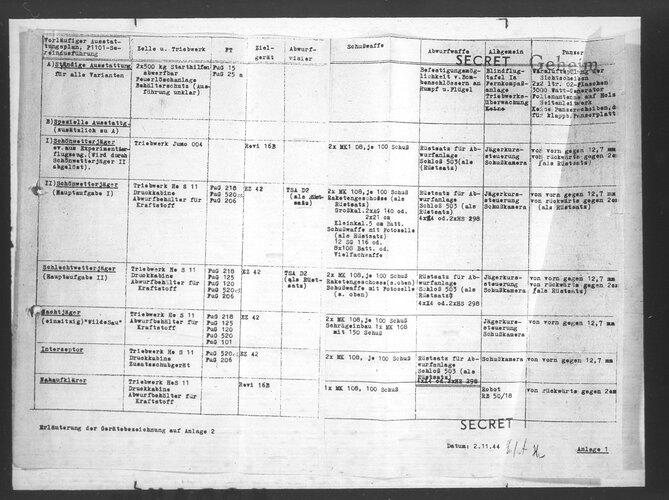
Similar threads
-
-
-
Messerschmitt Me 264 Variants and Projects
- Started by hesham
- Replies: 125
-
Messerschmitt P 1107 and P 1108 long range jet bombers
- Started by Stargazer
- Replies: 26
-
Luftwaffe: Secret Projects of the Third Reich by Dan Sharp
- Started by newsdeskdan
- Replies: 183

